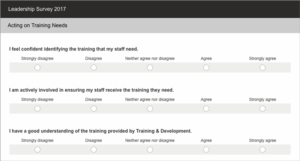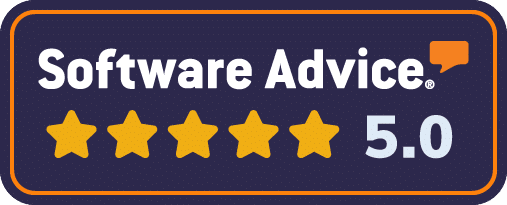What Questions Should You Include in a 360-Degree Feedback Survey?
If you’re building a 360-degree feedback survey, you already know it can be a powerful tool to develop self-awareness, improve performance, and build stronger leaders. But here’s the catch: the quality of your survey depends on the quality of your questions.
Ask the wrong questions, and you’ll get vague, unhelpful responses. Ask the right ones, and you’ll gather clear, actionable insights leaders can use to grow.
In this guide, you’ll learn:
- Why 360 feedback questions matter
- How to choose the right question types
- Examples of effective 360-degree feedback questions
Let’s get to it.
Why Are 360-Degree Feedback Questions So Important?
Unlike traditional performance reviews, 360-degree feedback gathers input from multiple perspectives—peers, direct reports, managers, and sometimes customers.
Because of this, your survey needs questions that:
✅ Are relevant to each rater group
✅ Encourage honest, specific feedback
✅ Align with your organization’s leadership competencies
When you design your survey carefully, you’ll avoid confusion and get results you can trust.
Types of 360-Degree Feedback Questions
A well-designed survey typically includes:
-
Rating Scale Questions
-
Quantitative questions (e.g., 1–5 scale) that measure frequency or effectiveness.
-
Example: “How effectively does this leader communicate expectations?”
-
-
Open-Ended Questions
-
Qualitative questions that invite detailed comments.
-
Example: “What is one thing this leader does exceptionally well?”
-
-
Behavioral Statements
-
Specific, observable behaviors instead of vague traits.
-
Example: “Provides timely feedback on performance.”
-
-
Role-Specific Questions
-
Items tailored to the employee’s position or level.
-
Tip: Avoid leading questions or value judgments. Keep wording neutral and clear.
15 Examples of Effective 360-Degree Feedback Questions
Below are examples you can adapt to fit your organization’s competencies.
📈 Self-Management
- Demonstrates accountability for results.
- Manages stress effectively in challenging situations.
- Seeks opportunities for professional growth.
🗣️ Communication
- Clearly communicates goals and expectations.
- Listens to others without interrupting.
- Adapts communication style to the audience.
💡 Decision Making
- Makes decisions based on data and analysis.
- Involves the right people in decision-making.
- Takes appropriate risks when necessary.
👥 Collaboration and Teamwork
- Supports colleagues and promotes a positive work environment.
- Encourages open dialogue among team members.
- Resolves conflicts constructively.
🏆 Leadership and Development
- Provides regular, constructive feedback.
- Recognizes and rewards good performance.
- Coaches team members to build their skills.
Open-Ended 360 Feedback Questions
Include 2–4 open-ended questions to capture richer insights. For example:
- What are this person’s greatest strengths as a leader?
- What is one area where this person could improve?
- What advice would you give to help this person grow professionally?
- Is there anything else you’d like to share?
These questions help uncover context that rating scales alone can’t provide.
Tips for Designing Your Survey
Here are best practices to ensure your 360-degree feedback survey works:
✅ Keep it concise: 25–50 questions maximum
✅ Use clear, behavior-focused language
✅ Ensure anonymity for candid responses
✅ Pilot-test the survey before rollout
✅ Align questions with your organization’s leadership framework
Final Thoughts
The questions you include in your 360-degree feedback survey determine its value. By choosing clear, relevant, and behavior-focused questions, you’ll empower your employees and leaders with insights they can actually use.
If you’d like help designing or implementing a 360-degree feedback survey, contact G360 Surveys to learn more about our solutions.


